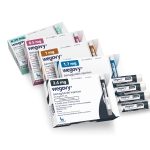This is a guest post from Ivan Oransky, M.D., editor of Reuters Health and AHCJ’s treasurer, written at my invitation.
May has been declared “Melanoma Awareness Month” or “Skin Cancer Awareness Month” – depending on which group is pitching you – and reporters are doubtlessly receiving press releases and announcements from a number of groups, including the Melanoma Research Foundation, the Skin Cancer Foundation, hospitals, doctors and other organizations.
Those press releases often point to the World Health Organization, which reports that “use of sunbeds before the age of 35 is associated with a 75% increase in the risk of melanoma” – a statistic often repeated in news stories about tanning beds.
But what does that really mean? Is it 75 percent greater than an already-high risk, or a tiny one? If you read the FDA’s “Indoor Tanning: The Risks of Ultraviolet Rays,” or a number of other documents from the WHO and skin cancer foundations, you won’t find your actual risk.
That led AHCJ member Hiran Ratnayake to look into the issue in March for The (Wilmington, Del.) News Journal, after Delaware passed laws limiting teens’ access to tanning salons. The 75 percent figure is based on a review of a number of studies, Ratnayake learned. The strongest such study was one that followed more than 100,000 women over eight years.
But as Ratnayake noted, that study “found that less than three-tenths of 1 percent who tanned frequently developed melanoma while less than two-tenths of 1 percent who didn’t tan developed melanoma.” That’s actually about a 55 percent increase, but when the study was pooled with others, the average was a 75 percent increase. In other words, even if the risk of melanoma was 75 percent greater than two-tenths of one percent, rather than 55 percent greater, it would still be far below one percent.
For some perspective on those numbers, Ratnayake interviewed Lisa Schwartz, M.D.,M.S., whose work on statistical problems in studies and media reports is probably familiar to many AHCJ members. “Melanoma is pretty rare and almost all the time, the way to make it look scarier is to present the relative change, the 75 percent increase, rather than to point out that it is still really rare,” Schwartz, a general internist at Veterans Affairs Medical Center in White River Junction, Vt., told him.
In a nutshell, the difference between skin doctors’ point of view and Schwartz’s is the difference between relative risk and absolute risk. Absolute risk just tells you the chance of something happening, while relative risk tells you how that risk compares to another risk, as a ratio. If a risk doubles, for example, that’s a relative risk of 2, or 200 percent. If it halves, it’s .5, or 50 percent. Generally, when you’re dealing with small absolute risks, as we are with melanoma, the relative risk differences will seem much greater than the absolute risk differences. You can see how if someone is lobbying to ban something – or, in the case of a new drug, trying to show a dramatic effect – they would probably want to use the relative risk.
This is not an argument for or against tanning beds. It’s an argument for clear explanations of the data behind policy decisions. For some people, the cosmetic benefits of tanning beds – and the benefit of vitamin D, for which there are, of course, other sources – might be worth a tiny increase in the risk of melanoma. For others, any increased risk of skin cancer is unacceptable. (And of course, for the tanning industry, the benefits can be measured in other ways – dollars.) But if reporters leave things at “a 75 percent increase,” you’re not giving your readers the most important information they need to judge for themselves.
So when you read a study that says something doubles the risk of some terrible disease, ask: Doubles from what to what?
Related
These numbers also might come up in reporting about the Health Policy bill as it does in “Indoor Tanning Getting Moment in the Sun” (March 26, 2010). From the story:
Over the past decade, indoor tanning has increasingly been likened to other maligned habits, cigarette smoking in particular.
And with the passage of the new health care bill, government officials are prepared to take that comparison one step further. A 10 percent tax could be levied on indoor tanning as early as July, in an effort to offset some of the health care bill’s multi-billion-dollar budget.
AHCJ resources on writing about medical studies:
- Evidence-based medical reporting
- Understanding the scientific article
- Understanding medical publications
- Statistical errors even you can find
- What you need to know about risks, rates and ratios
- Medicine 101: Words, numbers and journals
In addition, look for a slim guide about covering medical studies that AHCJ will publish this summer.








